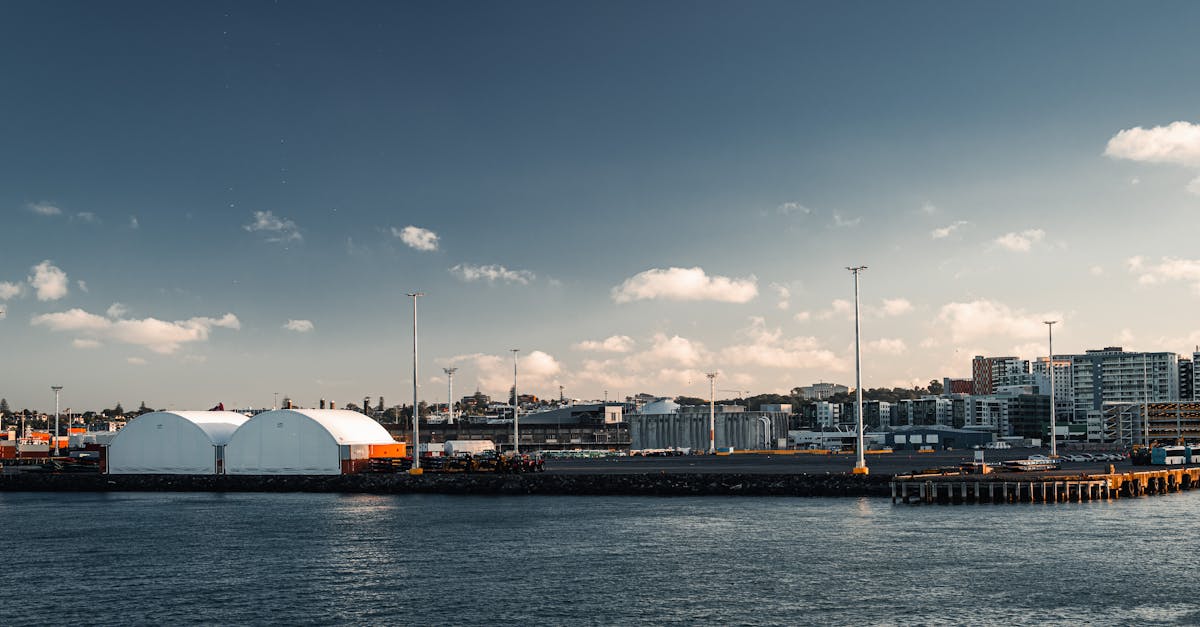Affordable Dx for All
-
Universal Health Coverage (UHC) Imperative: India’s commitment to UHC necessitates high service coverage and financial protection, which are currently undermined by the lack of accessible, reliable diagnostics at public healthcare facilities.
-
Role and Significance of Diagnostics: Diagnostic services are crucial for accurate disease identification, enabling informed clinical decisions, early detection, timely intervention, and preventing unnecessary or mistimed treatments, thereby saving costs.
-
Access Gaps in India: Private diagnostic services are expensive and inaccessible to the poor in urban and rural areas, leading to over-reliance on the public system, which itself suffers from a lack of diagnostics.
-
Addressing Changing Disease Patterns: India faces a rising burden of Non-Communicable Diseases (NCDs) alongside persistent infectious diseases, requiring diagnostic services to adapt to these evolving health challenges.
-
Cost-Effectiveness and Evidence-Based Guidelines: Ensuring diagnostic tests are cost-effective and guided by evidence is vital. The ICMR is tasked with preparing such guidelines, considering the sequence, cost, and diagnostic benefit of various tests.
-
Updates to the National List of Essential Diagnostics (NLED): The revised NLED by ICMR incorporates changes to reflect current disease patterns and technological advancements, expanding diagnostics at different healthcare levels.
- Sub-Centre Level: Introduction of rapid tests for sickle cell anaemia, thalassaemia, Hepatitis B, syphilis, and sample collection for dengue.
- PHC Level: HbA1C blood sample collection for diabetes, and on-site blood chemistry tests (blood sugar, liver enzymes, cholesterol).
- CHC Level: Introduction of dental X-rays.
- TB Diagnosis: Sample collection at sub-centres/PHCs, with in-house molecular TB testing at CHCs and higher levels.
-
Way Forward: Strategies include equipping primary care facilities with diagnostic tools, training personnel, expanding health insurance for outpatient diagnostics, ensuring last-mile availability via mobile clinics, and leveraging AI/telemedicine for skill and access gaps.

Kaleshwaram Lift
-
KLIP’s Purpose: A massive lift irrigation project on the Godavari River in Telangana, designed to irrigate 16 lakh hectares, stabilize existing farming areas, and supply 240 TMC ft of water for irrigation, drinking, and industrial uses. It’s recognized as the world’s largest multi-stage irrigation project.
-
Structural Failures & Controversy: Within three years of its construction, the Sundilla barrage experienced pier sinking, and both Sundilla and Annaram barrages developed cracks. Allegations point to permeable foundations being unable to handle heavy water flow.
-
Location Change Criticism: Shifting the project’s origin from Tummidihatti to Medigadda significantly increased costs and drew political criticism. While water availability at Tummidihatti was cited as the reason for the change, opposition parties alleged ulterior motives.
-
Judicial Inquiry: Following a promise by the Congress party, Chief Minister A. Revanth Reddy established a one-man judicial commission headed by Justice Pinaki Chandra Ghose to investigate corruption allegations. The inquiry, spanning 15 months, heard over 110 witnesses, including former Chief Minister KCR and former ministers.
-
Inquiry Findings: The commission’s report, submitted on July 31, 2025, reportedly found negligence in the project’s execution and fund release. The findings are slated for discussion in the Assembly.
IMEC Corridor
-
Gaza War Delayed IMEC: The ongoing conflict has significantly hindered progress on the India-Middle East-Europe Economic Corridor (IMEC).
- Why in News: The war has disrupted diplomatic efforts, making stakeholder meetings impossible and impacting regional cooperation crucial for the corridor’s development. Jordan-Israel ties have also weakened, directly affecting a key transit point.
-
Strategic Alternative to BRI: IMEC offers India a crucial counter-initiative to China’s Belt and Road Initiative.
- Why in News: It provides enhanced connectivity with Europe, bypassing Pakistan, and strengthens India’s economic and strategic ties with the Middle East and the EU.
-
Multimodal Connectivity: The corridor involves a combination of sea, rail, and road links, along with digital and energy infrastructure.
- Why in News: This comprehensive approach aims to drastically cut shipping times (estimated 40% reduction compared to the Red Sea route) and boost trade, digital connectivity, and clean energy transfer between India and Europe.
-
Geopolitical Vulnerabilities: The project, launched during a period of Middle East normalization, is now facing challenges from renewed regional instability.
- Why in News: Saudi Arabia’s normalisation with Israel has stalled, and the broader geopolitical tensions, including the Israel-Palestine conflict, pose significant risks to the corridor’s implementation and stakeholder commitment.
-
Key Members & Aims: Announced at the G20 Summit, IMEC includes India, Saudi Arabia, UAE, Jordan, Israel, the EU, and the USA.
- Why in News: The project’s success is vital for strengthening economic ties, especially given the EU’s position as India’s largest trading partner. It aims to boost trade, resilience, and energy cooperation.
LionDay 2025
-
Asiatic Lion Population Surge: Population has grown by 32% in five years (674 in 2020 to 891 in 2025), marking over 70% growth in a decade.
- Why in news: Demonstrates significant success in India’s lion conservation efforts, highlighting a positive trend for an endangered species.
-
Key Conservation Success Factors:
- Visionary Leadership & Project Lion: Prime Minister Modi’s prioritization drove policy, funding, and habitat expansion.
- Why in news: Illustrates the impact of strong political will on conservation outcomes.
- Community Participation: Local communities, like Maldhari pastoralists, have coexisted with lions, reducing conflict and aiding growth.
- Why in news: Underscores the crucial role of local involvement and traditional practices in conservation.
- Scientific Management & Infrastructure: Revival of Barda Wildlife Sanctuary and improved veterinary care have enabled natural expansion into new districts.
- Why in news: Shows the effectiveness of habitat restoration and scientific approaches in species recovery.
- Policy & Funding: A ₹2,900 crore national project supports monitoring and healthcare centers.
- Why in news: Indicates substantial government commitment and investment in long-term conservation.
- Visionary Leadership & Project Lion: Prime Minister Modi’s prioritization drove policy, funding, and habitat expansion.
-
Global Benchmark: India’s model, combining science, policy, and community partnership, is a global benchmark for wildlife conservation, especially for the sole wild population of Asiatic lions.
- Why in news: Positions India as a leader in successful wildlife management and conservation globally.
Contaminated Site Rules 2025
- First Legal Framework: India now has its first dedicated legal framework for managing chemically contaminated sites, notified on July 25, 2025, under the Environment Protection Act.
- Why: Addresses a long-standing gap in environmental governance and enables structured action.
- What are Contaminated Sites: Places with historical dumping of hazardous waste, leading to soil, groundwater, and surface water contamination, posing risks to health and environment.
- Examples: Landfills, waste dumps, spill sites, chemical waste storage.
- Current Status: 103 sites identified, with remediation started at only 7. Many polluters are defunct or unable to afford clean-up.
- Rule Provisions:
- Reporting: District Administration to submit half-yearly reports on suspected contaminated sites to State Pollution Control Boards (SPCBs).
- Preliminary Assessment: SPCB/Reference Organisation to conduct within 90 days of being informed to check for historical activity and potential contamination.
- Detailed Survey: If preliminary assessment indicates contamination, a comprehensive survey must be done within the next 90 days to identify type, extent, and levels of hazardous chemicals.
- Disclosure & Restrictions: Contaminated sites exceeding safe limits will be publicly disclosed, with access restrictions.
- Remediation Plan: A Reference Organisation (expert body) will design a plan detailing clean-up technology and timelines.
- Polluter Pays Principle: SPCB to identify polluters within 90 days; polluters bear full remediation costs.
- Government Funding: State/Central government to finance clean-up if polluters are defunct, missing, or unable to pay.
- Legal Liability: Criminal proceedings under Bharatiya Nyaya Sanhita (2023) possible if contamination caused death or injury.
- Gaps/Exemptions: Rules do not cover radioactive waste, mining operations, oil pollution of the sea, and municipal solid waste from dump sites.
- Why Needed: Addresses gaps where other laws apply.
- Omission: Lack of defined timelines for site remediation after identification.
Farm Exports Surge
-
5.84% Year-on-Year Growth: India’s agricultural exports reached $51.94 billion (annualized), showing a healthy increase, driven by factors like higher global food prices and easing export restrictions.
-
Key Export Drivers: Non-basmati rice (+11.54%), tobacco (+19.29%), coffee (+13.87%), and processed fruits & vegetables (+12.08%) are leading the growth.
-
Trade Surplus Halved: While agriculture exports ($51.9B) still exceed imports ($38.5B), the trade surplus has significantly reduced compared to a decade ago, indicating increased import costs or lower export prices for certain goods.
-
Global Demand and Domestic Factors: Increased demand from countries like Brazil and Zimbabwe, along with the lifting of domestic onion export bans, have boosted exports.
-
Potential Risks: A significant concern is the potential impact of US tariffs under Trump’s policies and ongoing global market volatility.
-
Overall Export Performance: This growth contributes to India’s strong merchandise exports exceeding $450 billion in FY 2023-24, with agriculture being a key sector alongside petroleum products and engineering goods.
-
Policy Support: Government initiatives like the Foreign Trade Policy 2023, RoDTEP, and schemes managed by APEDA and MPEDA provide crucial support for agricultural exports.

TN School Policy 2025
-
Two-Language Formula: Reaffirms Tamil and English as the sole mediums of instruction, rejecting NEP’s three-language model and Hindi imposition. Tamil is seen as identity, English as a global skill.
-
Vision: To build an inclusive, equitable, future-ready system rooted in Tamil culture, promoting critical thinking, creativity, digital literacy, and rational inquiry. Special focus on marginalized groups.
-
Class XI Board Exam Scrapped: Only Classes X and XII will have public exams.
-
School Entry Age & Structure: Retains 5 years for school entry and the 10+2 structure, diverging from NEP’s 5+3+3+4 model.
-
Admissions & Curriculum: No centralized entrance tests for arts/science; admissions based on Class XI/XII marks. Competency-based, inquiry-driven curriculum emphasizing Tamil heritage, environment, social-emotional learning, and digital skills. Arts, sports, life skills, and experiential learning are prioritized.
-
Policy Stand: Positioned as a counter to NEP, citing concerns over social justice and linguistic autonomy. State asserts control over education as a concurrent subject and opposes unilateral central mandates.
-
Implementation Goal: Developed by an expert panel; aims for 100% school-to-higher education transition (currently 75%).
-
Contrast with NEP: State views its policy as “madhi” (wisdom) against NEP’s “vidhi” (fate). Policy formulation based on Justice D. Murugesan Committee recommendations. NEP favors 6 years for school entry; Tamil Nadu policy mandates completion of 5 years.